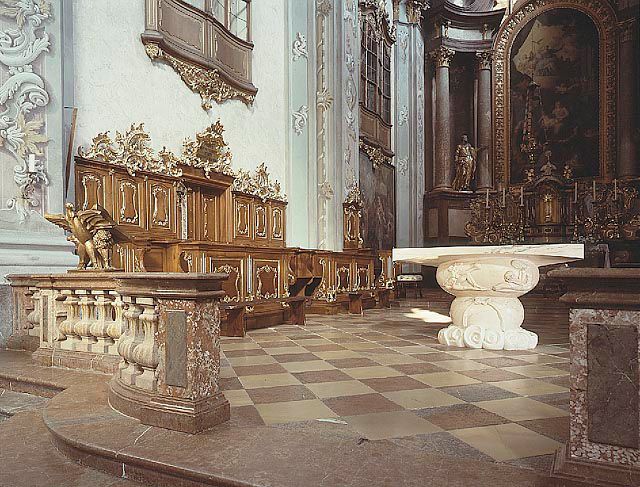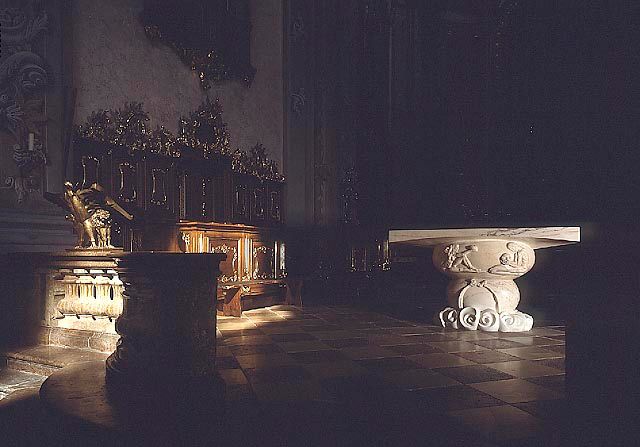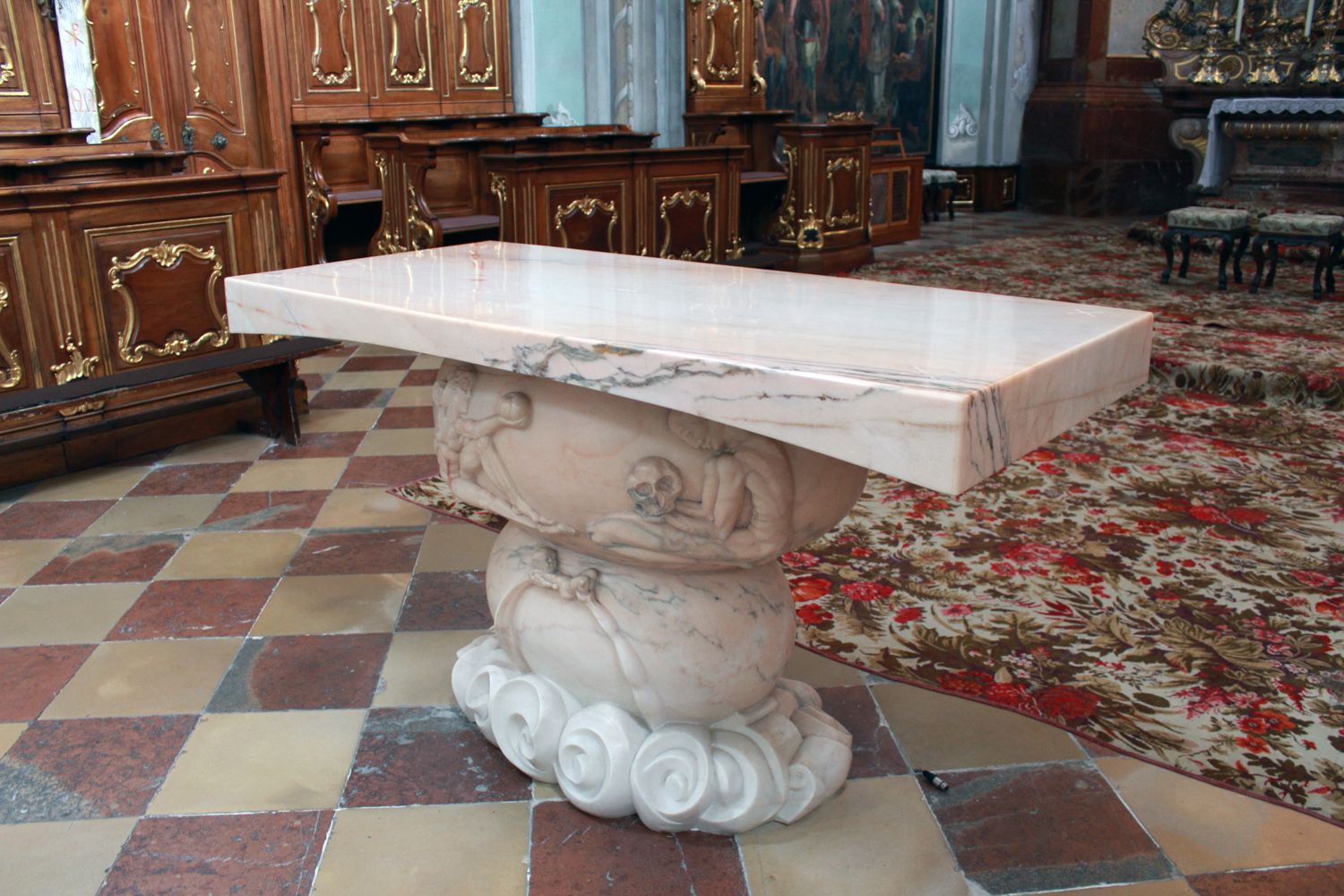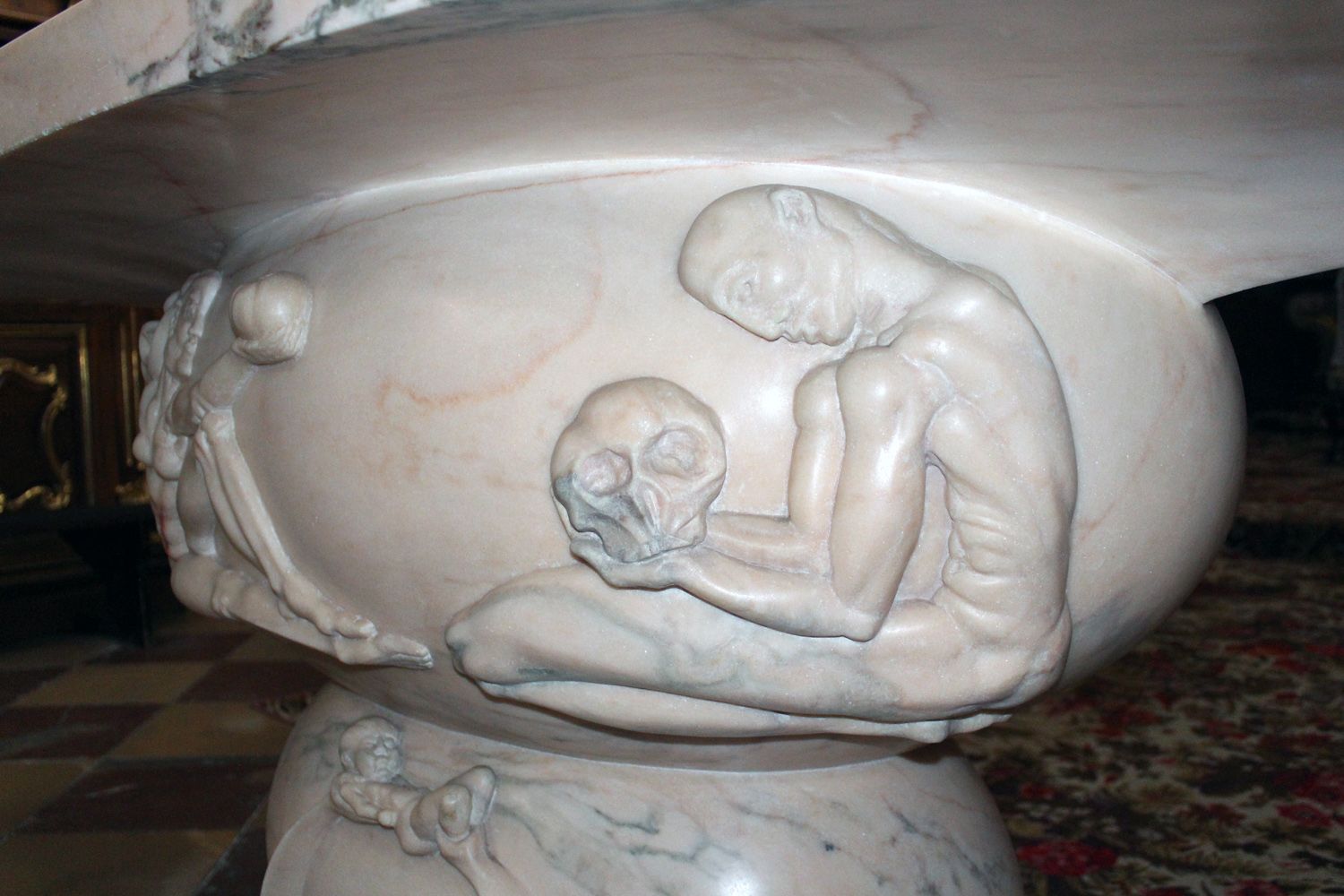Wander Bertoni
:
Church of Herzogenburg Monastery
Back
Information
The artists were interested in a harmonic connection between the baroque altar and the new one. The figures of red Portuguese marble, a self-confident Eve, an Adam engrossed in thought and a child as the transition to the human race represented in the story of the creation.
As far as the content was concerned, the task for the people's altar was the integration of the Creation Story into the altar. Out of 12 models with a variety of different contents, a design was chosen in which sculptural volumes predominate, with a contemporary, self-confident Eve, an Adam sunk in deliberation and a child as the bridge to the act of becoming human. The material selected for use, a pink marble from Portugal, stands out brightly from its surroundings. Surprisingly enough, the colours of the material, which become visible only coincidentally, match the content: milky waves of water convey the sense that the altar is hovering. A red line runs, like a trace of blood, from Eve's navel to the altar; the skull in Adam's hand is a peculiar dark-grey colour. My concern was to achieve a visually harmonious integration of the high altar with the new people's altar. The work for the altar, ambo and the processional cross took 450 days.





